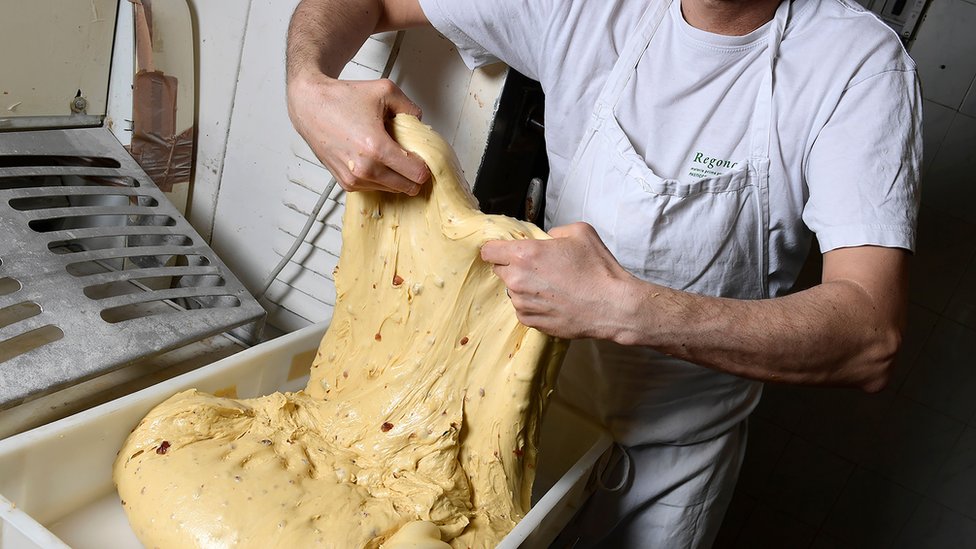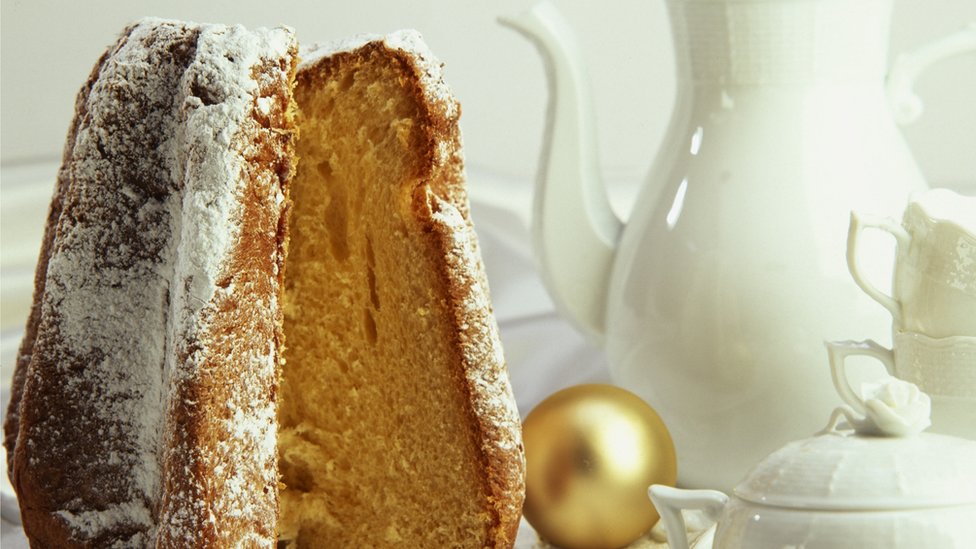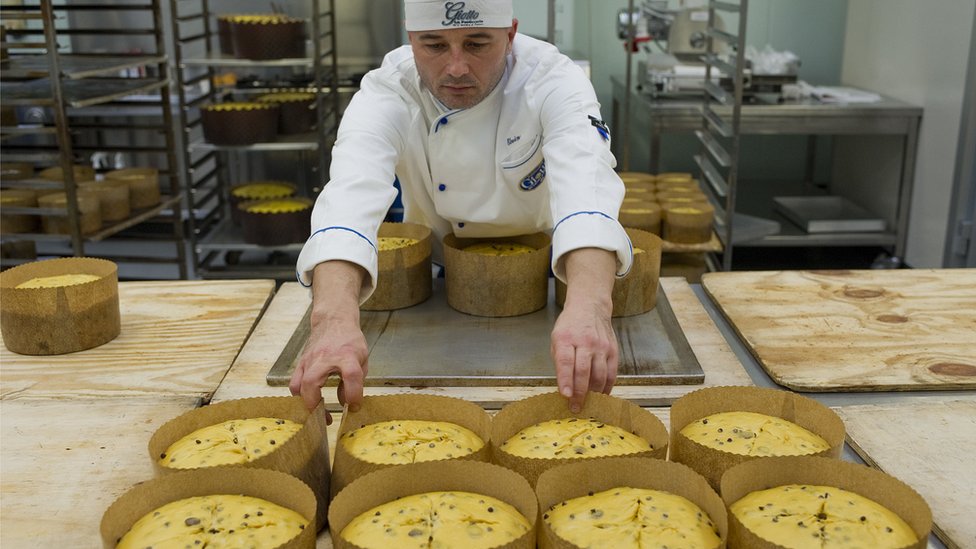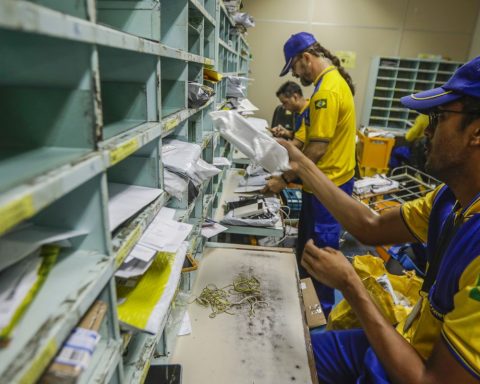December 24, 2022, 4:32 PM
December 24, 2022, 4:32 PM
Panettone (or panettone, in Italian) is, for many homes, synonymous with Christmas festivities.
With or without raisins, with candied fruit or with chocolate chips, this cake and its typical domed shape are an essential element on the tables of Europe and South America during the Christmas and New Year celebrations.
But, little is known about its origin, apart from its Italian provenance.
According to one of the most popular legends in Italy, the inventor of one of the most characteristic desserts of the gastronomic tradition of that country would be Toni, a kitchen assistant from Duke of Milan Ludovico Sforza, called “Il Moro”at the end of the fifteenth century.
On Christmas Eve 1495, the Sforza court was having a lavish banquet. In the kitchen, the chef is busy preparing various delicacies and asks his young scullery, Toni, to check the oven where huge biscuits are being baked, which will be the dessert at the end of the duke’s dinner.

Toni, however, exhausted from work, falls asleep for a few minutes and the biscuits burn.
The young cook, fearful of the reaction of the head chef and of the eager-to-eat guests, decides to sacrifice the yeast dough he had saved for his Christmas bread.
She works it with flour, eggs, sugar, raisins and candied fruit, until she obtains a soft and highly fermented dough, which she bakes and serves at the banquet.
The result is a resounding success and Ludovico Sforza decides to call that sweet “Toni’s bread”in homage to its creator.
Then, over the years, “Toni’s bread” would become popular throughout Italy under the name of “panettone”.
But what is the truth behind this legend?

“Absolutely nothing,” says Massimo Montanari, a professor of food history at the University of Bologna in Italy.
“It is one of the many fake news that circulate around the origin of many gastronomic products”.
The medieval origin of the “festival breads”
According to Montanari, a distinction must be made between two categories: products that have a certain date of birth and a clear inventor, and those that do not.
In the first category we find, for example, “pandoro” (which in the Venetian dialect means “gold leaf”), whose recipe was registered in the patent office in 1894 by the Verona pastry chef Domenico Melegatti.
The one with panettone, on the other hand, is a recipe from the collective tradition and thereforeeither therefore it is not possible to define with absolute accuracy his place and date of birth.
However, Montanari explains, it is possible to reconstruct the panettone family tree and go back to its medieval ancestors: the “sweet breads” or “holiday breads”, that is, breads to which sugar was added, raisins or spices and that were consumed during the celebration of important festivities, such as Christmas.

Indeed, one of the first documents that attest to the existence of these sweet breads is a manuscript preserved in the Ambrosiana Library in Milan that dates back to the 1470s.
His actor, Giorgio Valagussawho was the tutor of the Sforza dukes, describes what he calls the “Ritual of the log” which was celebrated in that court.
According to Valagussa’s text, on the night of December 24, a large log of firewood was placed in the fireplace and large sugared wheat loaves were served.
The head of the family served a portion to all the guests, keeping one for the following year as a sign of continuity.
“On the one hand, there was an element of connection with the basic product of daily food, bread, and on the other, there were ingredients and spices that made them ‘precious’, according to the taste of the medieval or Renaissance times,” he adds. Monatanari, author of several books on the origin of some of the most iconic dishes of Italian gastronomy.
and if well the relationship between panettone and the city of Milan is undeniableit cannot be said that it is exclusive, since there are also records of similar customs in other parts of northern Italy.

But it is at the beginning of the 20th century when the consumption of panettone during the holidays became popular throughout the European country, thanks also to the innovations introduced by Angelo Mottaan enterprising Milanese baker.
In 1919, Motta decided to add yeast to the traditional recipe – the dough has to rise for more than 30 hours before being baked – and wrapped the dough in special baking paper, which gave it its high domed shape instead of the anterior classic flattened shape.
Motta’s recipe was adapted around 1925 by another baker, Gioacchino Alemagnawho also gave his name to a popular brand that is still around today.
The stiff competition between the two bakers marked the beginning of the industrial production of panettone, which over the years has established itself as one of the most present products on Italian tables.
The landing in South America
In the European country, almost 42,000 tons of panettone were sold in 2018, according to data from the Unione Italiana Food employer.
But the success of this dessert surpassed the borders of Italy long ago and has been imposed as a Christmas tradition also in several South American countries such as Brazil, Argentina, Uruguay and Peru, thanks to the millions of Italian emigrants who between the end of the 19th century and the middle of the 20th century crossed the Atlantic in search of opportunities in South America.
Like Pietro D’Onofrio, an emigrant from southern Italy who settled in Peru, where he founded the ice cream company that still bears his name.
But it was his son Antonio who made an agreement with the Alemagna firm in Milan in the 1950s for the production and sale of panettone in Peru under the D’Onofrio brand.
“This year Peruvians will consume more than 35 million units,” says Ricardo Bassani, director of the confectionery business of Nestlé Peru, owner since 1997 of the D’Onofrio brand and three other panettone firms in the country.
“Peruvians are among those who eat this cake the most. Our annual consumption is 1.1 kg per person, which places us as the second country with the highest consumption, only after Italy,” adds the executive, who estimates the value of the panettone market in Peru at US$200 million. .
After Italy and Peru, the country where the most panettone is consumed is Brazil, with about 440 grams per capita per year.
And Brazil is the company that produces the most panettone in the world: Bauducco.
Founded in 1952 in Sao Paulo by another Italian emigrant, Carlo Bauducco, the company has more than 6,00 employees between Brazil and the US, a production capacity of more than 300,000 tons per year, and a turnover of more than US$700 million.
Now you can receive notifications from BBC News World. Download our app and activate them so you don’t miss our best content.


















